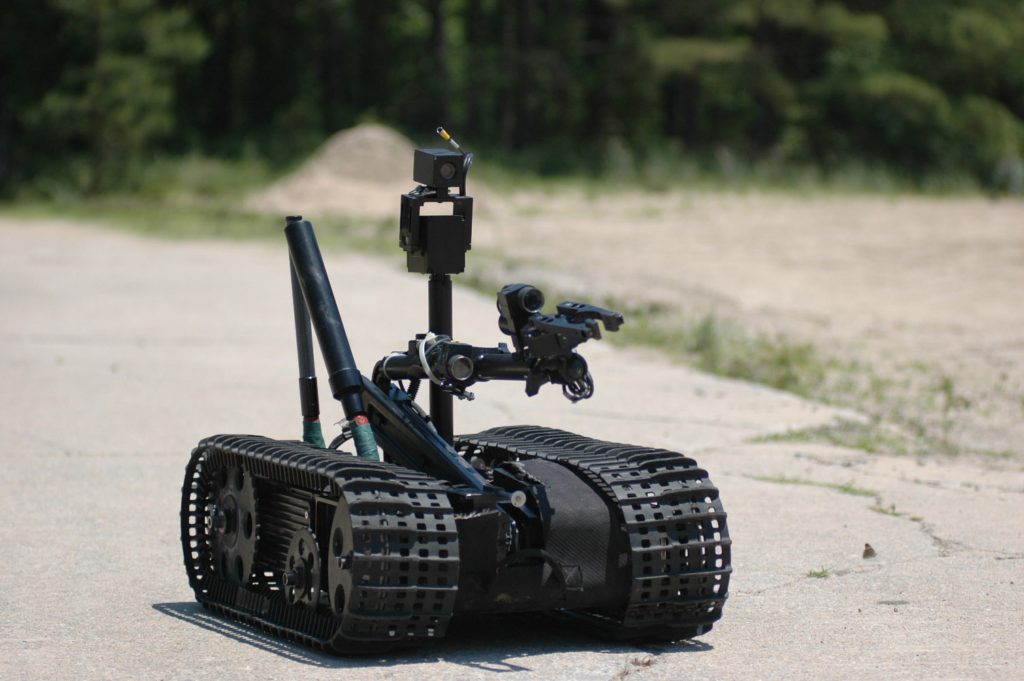Contributed Post

060607-N-7987M-025 Fort Story, Va. (June 7, 2006) – Explosive Ordnance Disposal Training and Evaluation Unit Two (EODTEU-2) demonstrates the use of a robot to disarm and defeat improvised explosive devices (IEDs) during a media demonstration at Fort Story. EODTEU is part of the newly formed Naval Expeditionary Combat Command (NECC). Within NECC, all naval expeditionary combat and supply combat elements are integrated so that they are more capable, responsive and effective in their role in the global war on terrorism. U.S. Navy photo by Photographer’s Mate Airman Mandy Mclaurin (RELEASED)
The announcement of A2Z Advanced Solutions going public is probably the most exciting robotics news this year. If you have never heard of the company is because it till now catered exclusively to the Israel Defence Forces, Israel Police, and other defence clients. This is the first time in their 30 years’ of business operation, they are going to introduce robotic solutions for the civilian market.
The announcement of A2Z Advanced Solutions going public was made by CEO Bentsur Joseph at the company headquarters in Israel. As per his statement, the robotics firm is all set to enter the Canadian civilian market and will be traded in the Toronto Stock Exchange. The company is yet to announce their civilian product line and the industries they are likely to target. However, it’s safe to say they are going to cater to businesses and industries instead of launching robotic solutions for average consumers.
For all the tech geeks and robotics enthusiasts, this is exciting news. Mainly because when a defence company enters civilian markets, it brings with it a long list of proprietary technologies. Technologies which were previously only reserved for the military.
The company right now manufactures robotic units such as bomb defusal robots, counter-terrorism units, and it even has an unmanned robot specially designed for fire fighting. There is a good chance they are going to take that knowledge and create custom robotic solutions for high-risk job roles. A2Z Advanced Solutions already has a healthy portfolio of global and domestic clients. This means their decision to go public is likely to be backed up by sound financials.
Their decision to go public will also allow them to expand their manufacturing capabilities and operational reach.
4 Jobs Performed By Robots That Are Saving Lives Every Day
Logging
A few years back, a video went viral of a robot that climbs trees and trims branches. The job role which previously required humans to climb dangerous heights and took hours to complete was safely done using a robotic solution in a matter of minutes. This means there is already an acceptance of robotic solutions in the logging industry. The idea of unmanned robots fitted with a chainsaw and performing dangerous logging duties is not that far fetched. Considering that logging is listed as one of the most dangerous job roles, the introduction of robotic solutions is bound to save lives.
Mining
A lot of mining companies use mining robots to reduce the human cost. These bots go deep inside mines, where there is poor lighting, hazardous particulates in the air, and the fear collapse. Considering that A2Z Advanced Solutions already makes bots for firefighting, they certainly have the capability to create robotic units suited for mining operations.
Construction
Construction work often requires going to dangerous heights and working in dangerous conditions. The usage of robotic solutions is already quite popular in the industry. Now, it needs to be seen if A2Z Advanced Solutions is aiming to target this industry by launching prototypes specifically built for construction.
Hazardous Material Cleaning
Right from cleaning radioactive wastes to robotic systems to remove asbestos, robots can take on dangerous cleaning jobs. Robotic solutions for cleaning hazardous materials is definitely not a new concept. After the Chernobyl disaster, the Soviets attempted to clean up radioactive graphite using German-made robots. While the robots at that time weren’t designed to endure that amount of radiation and thus the mission failed, the idea of using robotic solutions for cleaning hazardous materials became popular.






